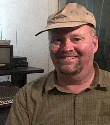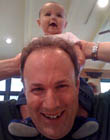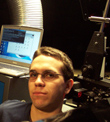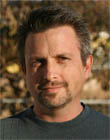|
|
This topic comprises 3 pages: 1 2 3
|
|
Author
|
Topic: Dolby SR-D or SDDS at 16 fps?
|
Joe Beres
Jedi Master Film Handler

Posts: 606
From: Minneapolis, MN, USA
Registered: Nov 2000
|
 posted 01-22-2003 12:02 PM
posted 01-22-2003 12:02 PM




Please forgive my ignorance on the subject of digital soundtracks, but I'm curious about something.
Let's say an archive restores an early silent film, maintaining the fill-frame 1.33 aspect ration, meant to be run at 16 fps. (Keeping in mind that it is frowned upon in the archive/restoration world to print up to 24 fps) Obviously, the analog soundtrack area is unavailable, but conceiveably an SR-D track (or SDDS), of a score for example, could be applied outside of the image. My question is would either of the digital tracks work at 16fps if recorded and encoded for that speed, or do they only work at or around 24 fps? I know that the lack of analog back-up could be an issue, and that most archives would never add a digital soundtrack to a print of a true silent film. However, i am curious about the logistics of the digital systems and whether this potentially could work or not.
| IP: Logged
|
|
|
|
|
|
|
|
|
|
|
|
|
|
|
|
|
|
|
|
|
|
|
|
|
|
William Hooper
Phenomenal Film Handler
Posts: 1879
From: Mobile, AL USA
Registered: Jun 99
|
 posted 01-23-2003 02:06 AM
posted 01-23-2003 02:06 AM





Like Scott said, silent films were shot & are projected at different speeds. For the most part, only the earliets were 16-16 fps
For the love of Mike, please don't run them at 16 or 18 fps. It was even expected at the time that in projection speed would be slightly faster than taking speed, & the slight speed increase was part of the "art" of movies.
Anybody who's ever sat through Safety Last, Thief of Baghdad, etc. projected by someone who didn't do their homework well & insisted that silent movies are 16fps knows how much it makes you want to just start slapping the guilty. Those averaged around 24 fps.
Something earlier like Birth of a Nation has much that was taken about 16 fps & was meant to be projected at about 18 fps.
David Pierce's page at
http://www.cinemaweb.com/silentfilm/bookshelf/#March1998
has info on this, & includes period instructions from different films for particular projection speeds. The projection speeds are feet per minute, so you must divide by 3.75 to get frames per second.
And if you look at the later SMPE RP's for silents, you'll find an interval of from +/- 2 feet per minute to +/- 6 feet per minute! Which makes sense, since in the days of hand-cranked cameras & projection a couple of fps margin of error would be inevitable.
When in doubt, run it at 24 fps. Unless it's real old stuff like BOAN or Lumiere's. Historically, the projection speed was what looked best to the projectionist, barring outside influences like the manager telling him to crank them through as fast as possible to get more shows in per day.
| IP: Logged
|
|
|
|
|
|
All times are Central (GMT -6:00)
|
This topic comprises 3 pages: 1 2 3
|
Powered by Infopop Corporation
UBB.classicTM
6.3.1.2
The Film-Tech Forums are designed for various members related to the cinema industry to express their opinions, viewpoints and testimonials on various products, services and events based upon speculation, personal knowledge and factual information through use, therefore all views represented here allow no liability upon the publishers of this web site and the owners of said views assume no liability for any ill will resulting from these postings. The posts made here are for educational as well as entertainment purposes and as such anyone viewing this portion of the website must accept these views as statements of the author of that opinion
and agrees to release the authors from any and all liability.
|

 Home
Home
 Products
Products
 Store
Store
 Forum
Forum
 Warehouse
Warehouse
 Contact Us
Contact Us




 Printer-friendly view of this topic
Printer-friendly view of this topic
















![[Smile]](smile.gif)





